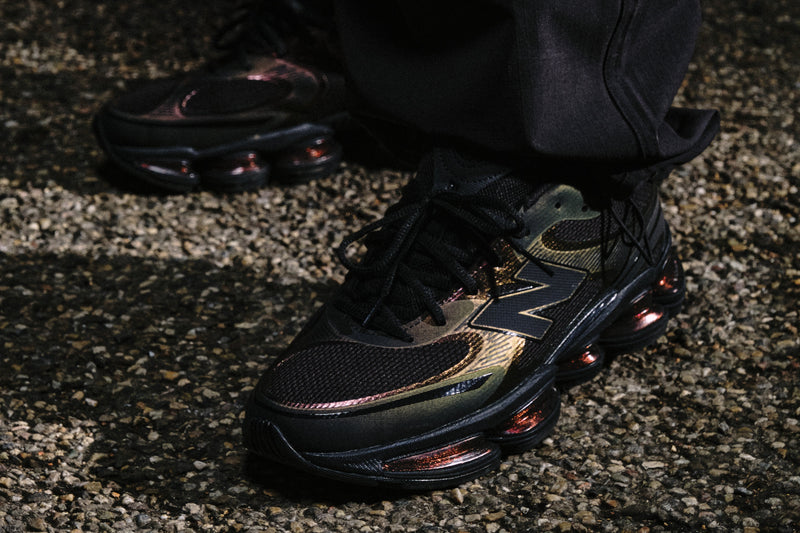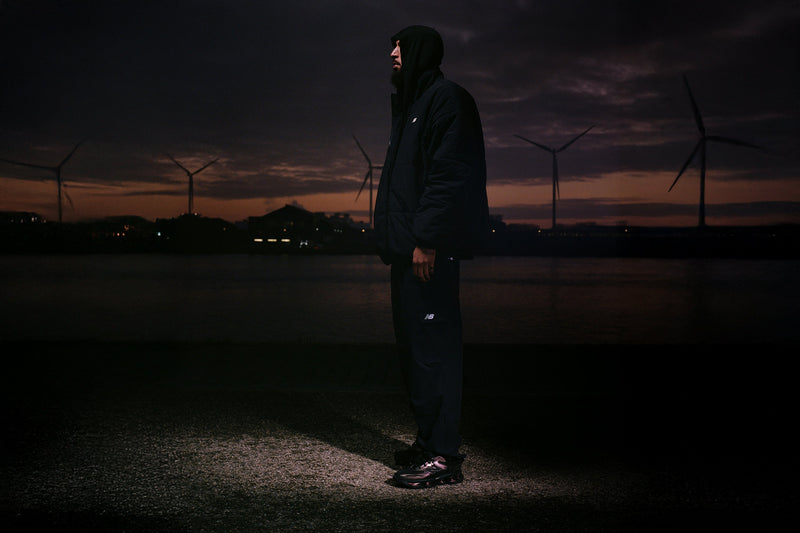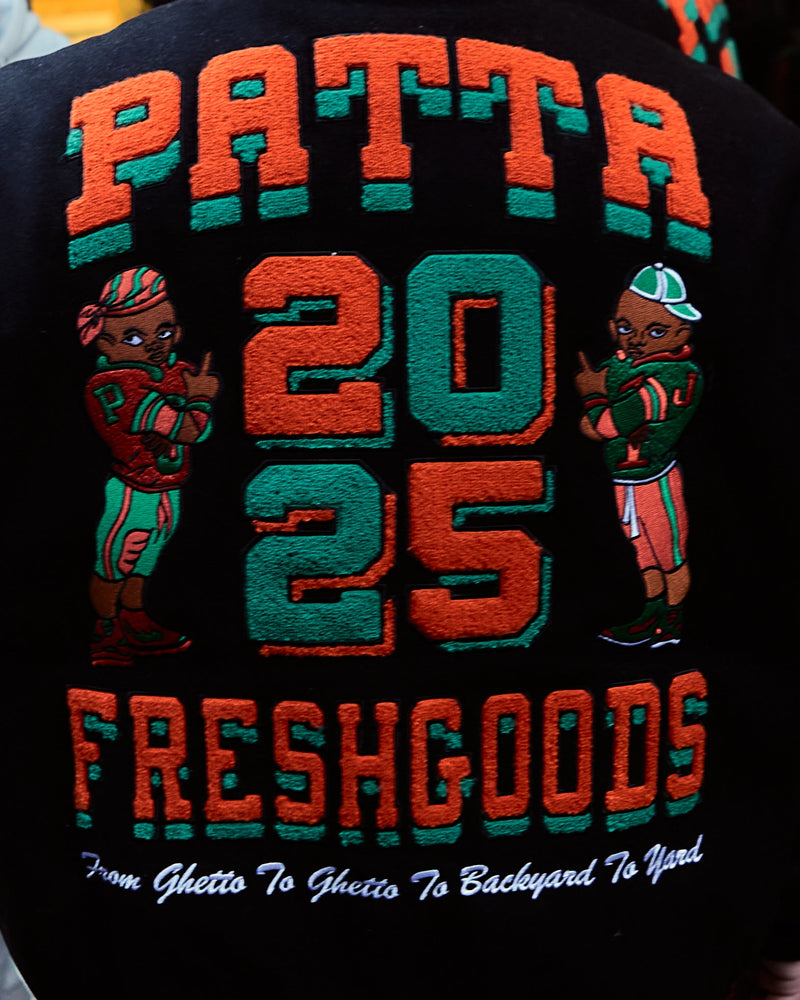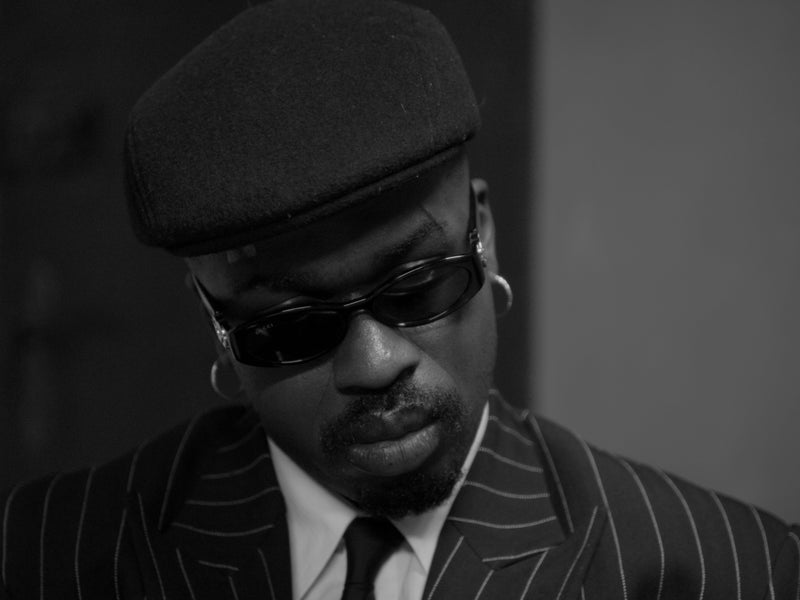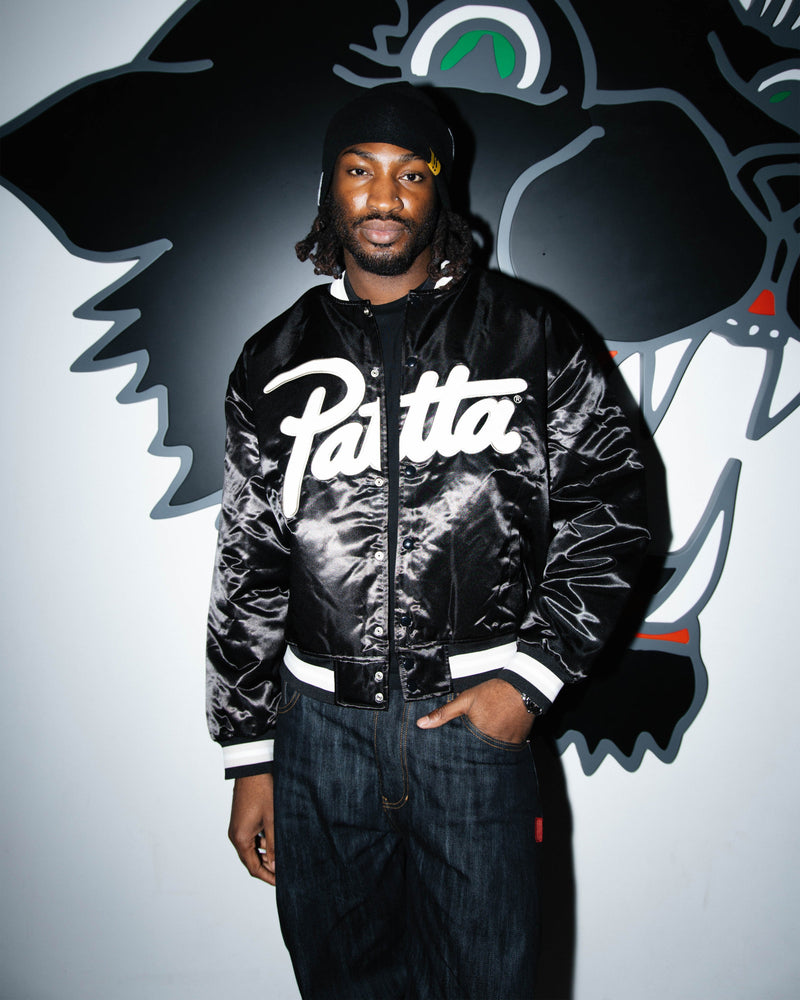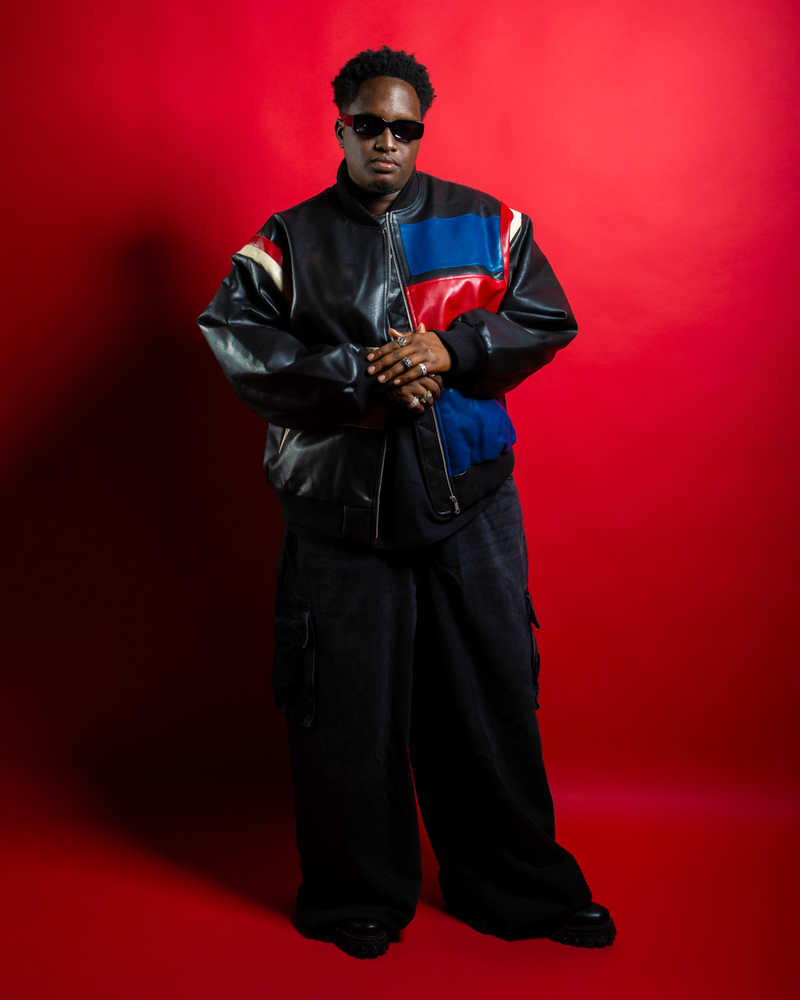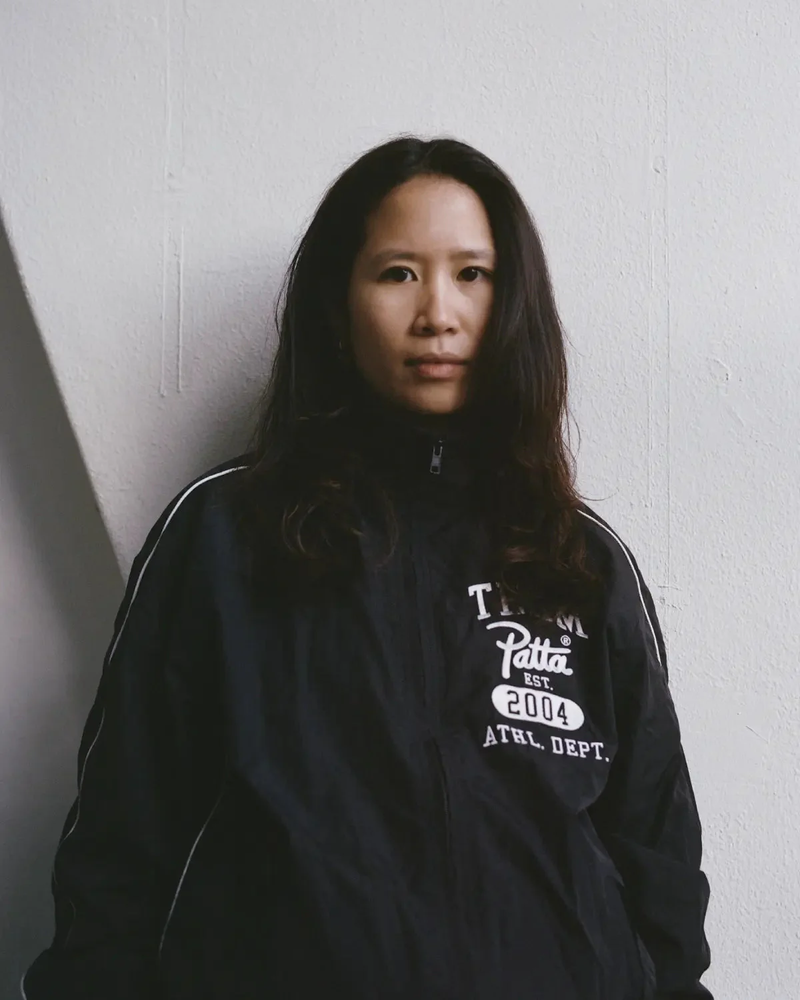
Patta Vol. 1: Lush Life By Nelson George
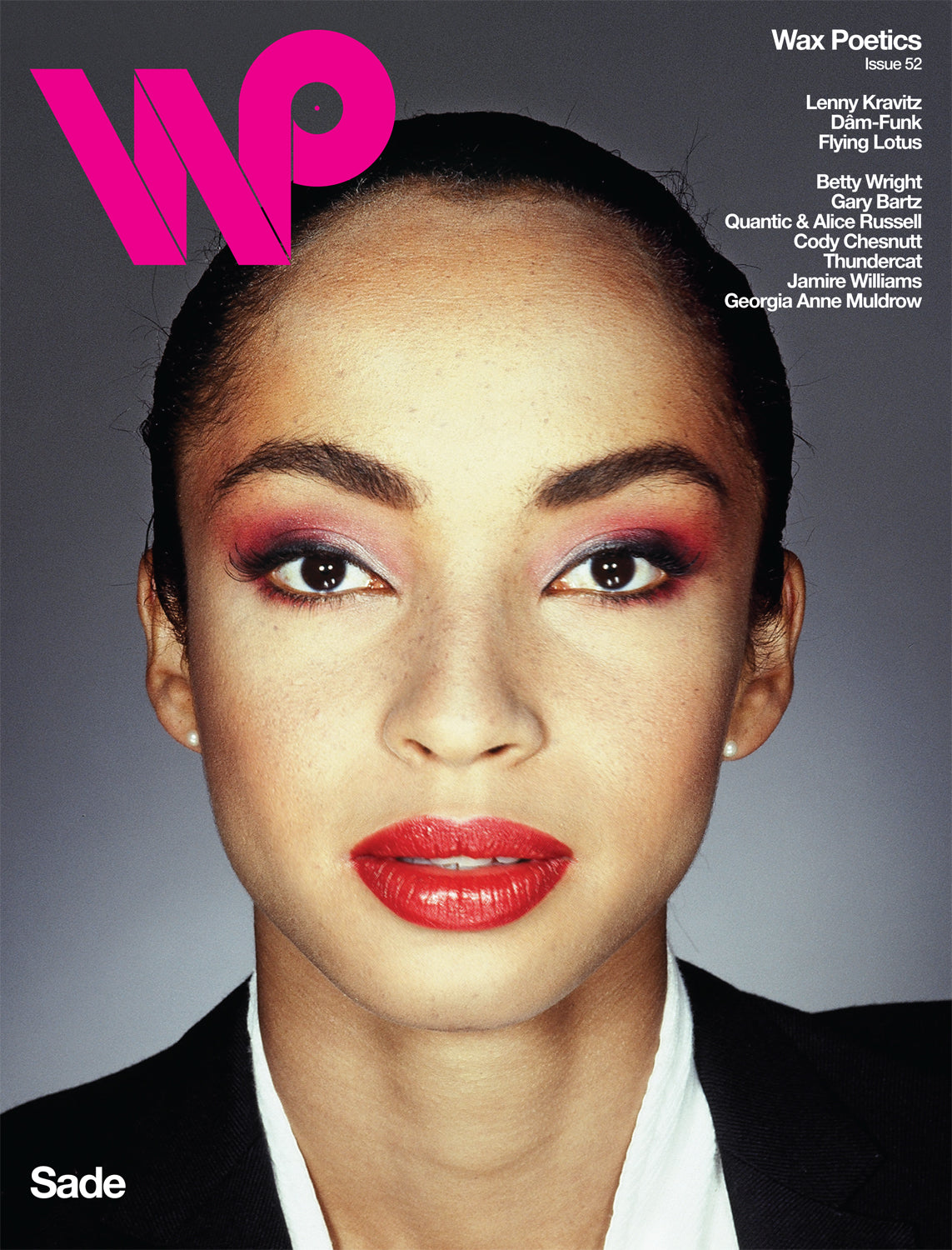
Sade Adu was a model and a clothing designer who heard a higher calling in music. In the early ’80s, she joined a London-based Latin-funk band that had P-Funk aspirations. But her icy-smooth delivery and knockout looks soon became the star attraction as a noted producer brought Sade and her band into the studio to record “Smooth Operator,” which resulted in a worldwide smash. While Sade is often pegged somewhere between smooth jazz and quiet storm, the band culled all its influences — a little funk, pop, R&B, jazz, Latin, and reggae — and made an art out of blurring genres. The end product was cool and mysterious, sophisticated and grown up.
Since its relaunch in 2021, Patta has partnered with Wax Poetics magazine. To celebrate the partnership, we proudly present an interview with Sade, originally published in issue 52 of Wax Poetics.
In the annuals of pop culture, 1984 will forever be associated with Michael Jackson’s Thriller, an atomic bomb of pop/R&B detonated by elaborate videos, dynamic songs, and the eccentric star’s prodigious gifts. It was a period of blockbuster LPs with Prince, Madonna, and Bruce Springsteen in the process of releasing and recording career-defining music. It was a time of extravagance in dress and gesture driven by the new cultural force (and marketing machine) called MTV.
Amid all this blind ambition came an album by a British band with a name American’s had a hard time pronouncing. Sade (say shar-day), composed of keyboardist Andrew Hale, bassist Paul Denman, guitarist/saxophonist Stuart Matthewman, and vocalist Helen Folasade Adu, debuted with the elegantly film noir–like Diamond Life, a record that sounded like nothing else on the radio.
Sade’s debut, as well as the 1985 follow-up, Promise, had a full, sophisticated pop-soul sound with jazzy horns and hints of reggae, pop-friendly melodies, and smooth, funky grooves. Later albums, such as the 1992 classic Love Deluxe, are mixed almost like a dub album with the silences between the notes as powerful a presence on the record as the instruments themselves.
This four-member band created a distinctive style out of a relatively small musical palette. Crucially, they never chased trends or let themselves be seduced by the latest fads. They became specialists in an intricate minimalism with Matthewman’s sultry sax and tasty guitar licks as identifiable as handwriting. The rhythm tracks of their many classic singles are always anchored by Denman’s throbbing bass and, in the early days, by a live drummer and later by a drum machine. Hale and Matthewman provided the sweet, supple riffs that sounded as good on pop radio as on late-night quiet-storm shows. It is an approach that’s sold fifty million albums over nearly the last thirty years.
Of course, central to the sound’s success is Sade herself, an almond-eyed, Nigerian English beauty whose pulled-back black hair, scarlet lipstick, and clinging, backless dresses inspired imitation in women and lust in men. In the glory days of MTV, Sade’s grace stood out among the dancing and aggressive sexual display. She was the anti-Madonna, a woman whose stylistic restrain was an antidote to the Material Girl’s garish displays. Onstage, Sade doesn’t move much, but when she turns or shakes her hips, the crowd goes wild, as if that sensual gesture is what they’ve waited for all concert.
But Sade, as a singer and writer, provided more than surface glamor. Her voice — plaintive, supple, world-weary, warm, and sexy as hell — marked Sade as a song stylist capable of conveying a complex range of emotion. Her contemporaries on the charts were Whitney Houston and Anita Baker, ladies with big voices that soared to heaven. Yet Sade felt right at home on the radio between them, her singing controlled, yet dramatic, like a flute solo in an orchestra filled with brass.
In writing all her lyrics and crafting many of the band’s melodies, Sade has created a musical catalog of devotion and yearning, of desire thwarted and fulfilled, songs that are soulful but also have echoes of jazz and even country and western. Many of her most memorable compositions are built on clever contradictions (“The Sweetest Taboo,” “Soldier of Love”) that reflect a very adult perspective on the nuances of romance. She’s always made music that both reflected and demanded maturity.
The heart and soul of the band are Sade and Matthewman, a duo whose artistic collaboration goes back to a London funk band called Pride in the early ’80s. Notoriously reclusive, Sade lives on a farm with her boyfriend, his son, and her adolescent daughter well outside London and avoids the Page Six life she could easily have. Matthewman, now a hard-core New Yorker who’s resided in Manhattan for decades with his wife (and more recently a young son who’s a bit of a musical prodigy), works with many up-and-coming artists around the Apple. In the time between Sade’s 2010 album, Soldier of Love, and their arena tour of 2011, which took them across the U.S., South America, and Europe, I spoke separately to both Matthewman and Sade.
With Matthewman, who did the score for my 2007 HBO film, Life Support, we really got into the nuts and bolts of the band’s musical evolution and a couple of side projects. The conversation with Sade covered her lifestyle, musical choices, and philosophy, much of which explains the gaps between the band’s releases and why she doesn’t make music outside this celebrated musical unit.
Sax and the Sound
The roots of Sade are in a band called Pride that was gigging around London in 1982 with Sade singing background vocals, Matthewman playing tenor sax and guitar, and Denman on bass. “Pride had elements of Latin and funk,” recalls Matthewman. “The idea was, we wanted to be like Funkadelic.” Matthewman, who’d moved to London from the northern England city of Hull, was refining his own style, based on influences like Bill Withers, King Curtis, and Lee Perry. But it was the star power of the Nigerian English background singer that made Matthewman and others think she should be singing lead vocals. “Everybody just freaked out over Sade,” he says. Born in Nigeria and raised in England from the age of four, Sade was attending London’s Central Saint Martins College of Art and Design when she began her singing career. Along with drummer Dave Early, this iteration of Sade, the band, built a following in London, eventually adding keyboardist Hale, a friend from the nightclub scene, to expand their sound.
Eventually, Matthewman, Sade, Denman, Hale, and Early would write and record demos of five songs that attracted the attention of Robin Millar, a young producer who had a studio where future hits like “Smooth Operator” and “Your Love Is King” were given the professional sheen that attracted the attention of Portrait Records in the United States. “We’d been living in squats in London,” he remembers, “and now we were getting fed. None of us had a job or a backup plan. We just got thrown headfirst into it when we got signed. Suddenly, we had a record deal and were being dragged around to nice hotels and eating well.”
The international success of Diamond Life, released in 1984, allowed them to travel extensively for tours and promotional events. It also meant this young band suddenly had pressure to deliver a hit follow-up album. “The first album was songs we’d been playing for years,” he recalls. “But it was a challenge to create that follow-up. ‘Is It a Crime’ came out of a sound check when we were touring that we then put into the set. Later, we’d record ‘Crime’ live in the studio. After that tour, Sade and myself went to Sri Lanka on vacation to try to write songs, but we didn’t get anything done. So we found that we kinda do it best in the studio, and that’s remained a big part of our process ever since.”
From Diamond Life to this day, the band has been a favorite of Black audiences, though Sade has never really done traditional R&B. Matthewman is very aware of that community’s dedication to the band. “R&B audiences really like us, but we really don’t do R&B,” he observes. “What we do is very stripped down. It’s never been Sade and the top R&B producer or top R&B session guys. Our limitations as musicians have defined our sound. We brought different things to the mix. Paul had a punk and reggae background. Andrew has a great ear for finding the right sound. So the music wasn’t really thought out. It has always been a product of what we were capable of. We liked Nina Simone. We liked Chet Baker. So we did what we could do and didn’t try to do more than that. I think what emerged is a very thick, very deep sound that won’t impress anyone with its virtuosity but fits Sade’s voice.
“When she sings, she’s like a Frank Sinatra or a Billie Holiday. She’s telling a story. You are really hearing the lyrics.” Matthewman refers to “Pearls” from 1992’s Love Deluxe as an example of how the band creates its songs. Beginning with the lyrics “There is a woman in Somalia, scraping for pearls on the roadside,” the haunting song is about turmoil in Africa, and it is always one of the emotional highlights of any Sade show. “We were in the studio, and she was in the other room watching a CNN documentary about Somalia. She went into the vocal booth and just started the song, taking what she’d seen and turning them into words. She didn’t even have any headphones on. Andrew started playing chords. So she’s singing and isn’t hearing what Andrew was doing at all. So a lot of our writing happens in that way–all of us in the room working off each other, listening to each other.”
The band’s second album, Promise, released in 1985, was also extremely well received, building on the jazz undertones of their debut with a big, jazzy sound that featured Matthewman’s bold saxophone solos. The self-effacing musician plays down his contribution, simply saying, “It was a sound that worked with that material. There was no ego involved.”
There would be a fair amount of tragedy surrounding the band after that early success. Original drummer Early died in 1996 and, while both Peter Lewenson and Martin Ditcham would regularly work with Sade over the next couple of decades, Early was never formally replaced. Millar, who’d suffered tunnel vision for years, eventually succumbed to blindness.
Three years later in 1988 came Stronger Than Pride, the third album, which scaled back the horns and crafted a spacious sound with Matthewman’s guitar and Hale’s keyboards now most prominent in the mix. The propulsive “Paradise” and the airy title track reflected this evolution in Sade’s sound. “It just kind of worked out for those songs to have more empty space,” says Matthewman. “Having prominent sax really seemed to get in the way. Plus, we were horrified by some people labeling us ‘smooth jazz.’ ” Matthewman was increasingly personally interested in dub music and would, under the moniker Cottonbelly, independently release an album of reggae-influenced soundscapes and remixes that would certainly impact how he heard Sade’s music.
Mike Pela, who’d engineered the first two albums, stepped up into the producer’s chair, coproducing with the band. “Mike had been with us from day one in the studio,” Matthewman says. “He really knew how to get performances out of us.” In the three years between the second and third albums, Sade’s members would send her “ideas for your handbag,” that is, cassettes with musical ideas that could sit in her bag “for five years,” Matthewman recalls with a laugh.
Love Deluxe, released in 1992, is the apex of this balance between rhythm and space, melody and arrangement. The singer came into these sessions with “an enormous book of lyrics,” Matthewman says. “Some would have melodies. Sometimes just fragments of songs.” The album’s signature song, “No Ordinary Love,” a taut, funky song with coiled intensity, started with a Matthewman-created rhythm track of drum and bass. “Sade started writing around that, and Andrew Hale came in with some chords. I was messing around with a heavy rock-guitar sound. I didn’t think she’d like it, but she wanted to keep it, and we mixed it in. The trick with Sade is that you can never second-guess her. You never know what she’ll like.”
One of the more positive aspects of the gaps between Sade albums has been that the instrumental members have released two cool, evocative albums under the name Sweetback. Matthewman says, “We always had extra instrumental tracks from our Sade sessions, so the label said, ‘Why don’t you do an album of instrumentals?’ ” But instead of turning in just a collection of evocative tracks, that album became a showcase for several promising talents, including MC Bahamadia, Groove Theory’s Amel Larrieux, longtime Sade background singer Leroy Osbourne, and, most importantly, Maxwell, who debuted with the sensual “Softly Softly” several months before releasing his neo-soul classic Urban Hang Suite. Matthewman worked extensively with Maxwell on that album, as did Sade’s producer Pela, who mixed it. Sweetback’s second album, Stage 2, released in 2004, featured the young female vocalist Aya on seven tracks, though the best songs on it featured eclectic singer-songwriter Marc Anthony Thompson aka Chocolate Genius on several songs.
Despite the spaces between Sade’s albums, the band still works easily together. For Solider of Love, they recorded the majority of the music at the secluded Real World Studios in Box, Wiltshire, England—a studio whose “Big Room” supposedly is the biggest control room in the world—and hunkered down, cutting the entire album on and off over a few months. Because of their track record and the fact that they record so infrequently, there’s virtually no A&R input or little consultation with their record company, Sony. “The head of the company will come down,” Matthewman says, “and we’ll play the album for him, and that’s it.”
While working on “Soldier of Love,” the title song of their 2010 album, the band was in the studio when Sade was playing a beat on a drum machine and an orchestral string sample “that had a cool military sound,” says Matthewman. “It was the first song we started for that album, and it was the last one we finished.” He adds, “Sade isn’t a musician as such, but she’ll grab a keyboard and play to get her point across.”
Sade has released only three studio albums in the last twenty years. The gap between Lovers Rock and Soldier of Love was nine years. Which raises the question of whether the group has been tapped out creatively. Matthewman disputes that idea. He says, “It’s not that it’s harder to create the songs. It has been that life gets in the way. We all have families. We all live in different places. Sure, we call, text, and send emails, but it is hard scheduling everyone. Plus, we all know that once we record, it means doing videos, remixes, and touring. It’s a big fucking commitment to be Sade,” he says with a laugh.

Lady and the Lamb
Sade, at fifty-three, is still one of the sexiest women you’ll meet. So when she walks up and gives you a hug, it isn’t something you easily forget. I first interviewed her in the mid-’80s when she was a burgeoning, young starlet. Not only has her beauty remained, but her demeanor, warm yet distant, familiar but with much unsaid, remains the same. It is this sense of connection and an air of mystery that has given her a mystique unusual in the age of Twitter and blogger-mania.
So when I ask Sade about the gaps between albums and tours, she is friendly but firm. For her, a woman who has consciously distanced herself from the machinations of the entertainment business, it means her decisions are made in the moment with little or no calculation. “Whatever I’m doing, I’m in that moment and I’m doing it,” she tells me on a wintry day in New York. “The rest of the world is lost. If I’m cooking some food or making soup, I want it to be lovely. If not, what’s the point of doing it? I just go along with the moment. I definitely have a weird sort of sense of time.” She laughs when she says this, knowing how much of an understatement it is.
“The band is always more ready than I am. I have to just wait for those times in my life where the dust is settled. If there’s stuff going on in my personal life, I can’t just say, ‘Whatever, I’m going in the studio, see ya.’ If there’s stuff in my personal life that needs fixing, I’d like to fix it before I record. I don’t know if that’s procrastination or not.”
As an illustration of her thought process, Sade tells the tale of how she fell off the vegetarian wagon after nine years. “I hate to tell this story,” she says with a smile, “but I have a farm, and I saw these little lambs gamboling through the field, and I started to salivate and thought I should get to the tandoori shop quick before I pull the leg off the lamb! It’s weird. I just thought it a natural thing for me to do right then was to eat meat. I went through that whole veggie period thinking it wasn’t a good thing to eat meat, and maybe it was for that time.”
Sade makes it very clear that she’s never lost her love of music; it’s just that, with time, she has a different perspective. “I love being in the studio so. I love making music more than I love doing anything else that’s doable,” she says with great passion. “It just has to be the right moment. I’ll go, ‘It’s time to start writing music.’ Then there’ll be a cobweb up in this corner, and I can’t possibly start until the cobweb’s gone.”
She firmly believes that the gaps between records and tours are one of the reasons Sade is still viable in a musical landscape that’s changed profoundly since their debut. “Without them, we would have D-I-V-O-R-C-E-D long ago,” she observes, “especially if we’d been on the road all the time. Actually, I never thought about it, but the gaps make making records such a privilege. You know, I love the coming together of all of us in the studio. I mean, if Christmas came every day, it would be boring.”
That closeness with her fellow band members is the reason she has turned down numerous offers to record duets or appear on tracks with hot MCs. “I’ve never done a ‘collabo.’ I’m too scared. Like The Wizard of Oz, they’ll find out there’s nothing there. As for collaborations, I’m collaborating with the band and do what we do. I see myself as a member of this band who does these songs that we write.”
Sade recently released a document of their last tour, Bring Me Home–Live 2011, that includes a CD of live material as well as a DVD of the spectacularly designed arena tour. It’s unclear when, or if, there will be another album or tour. So enjoy this material. Enjoy this document, and listen to Sade’s music–sounds as elegant as pop music gets.


